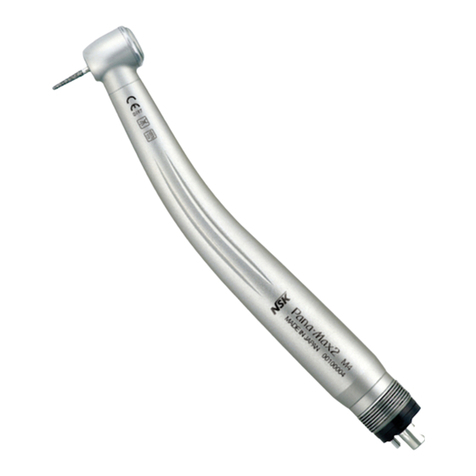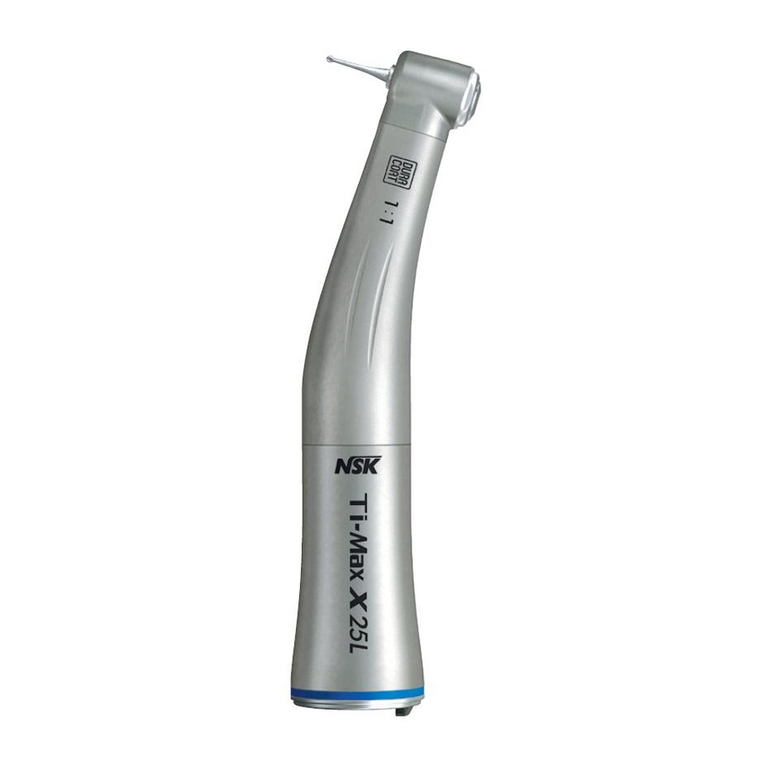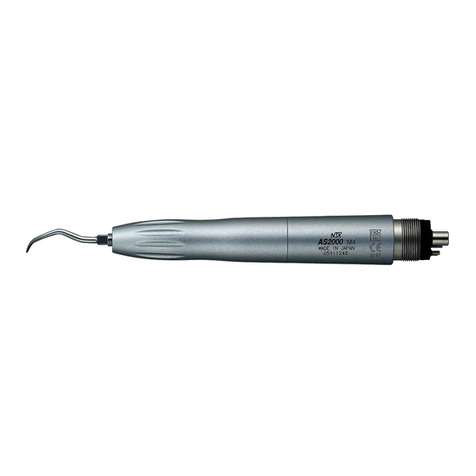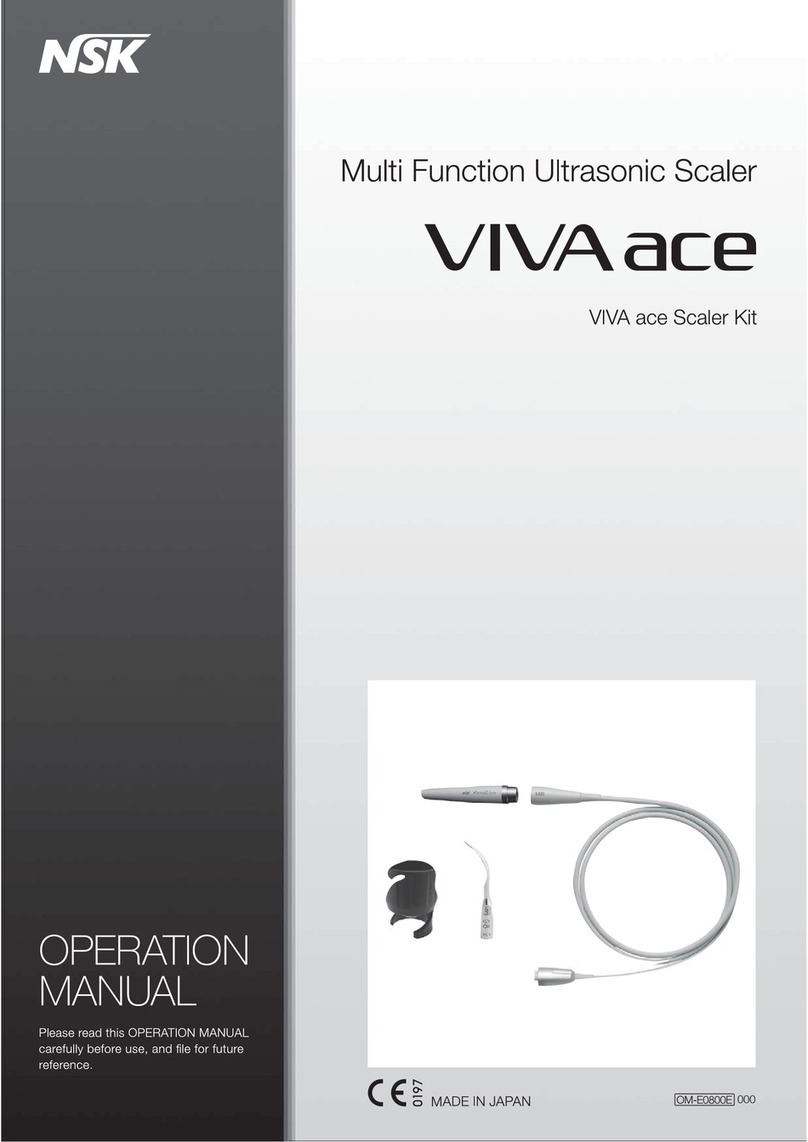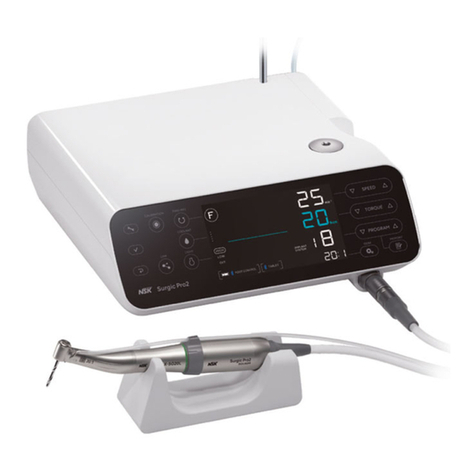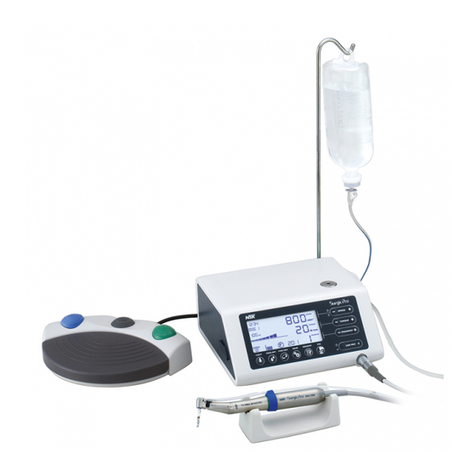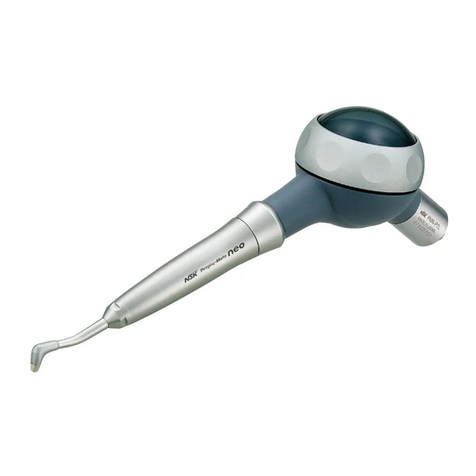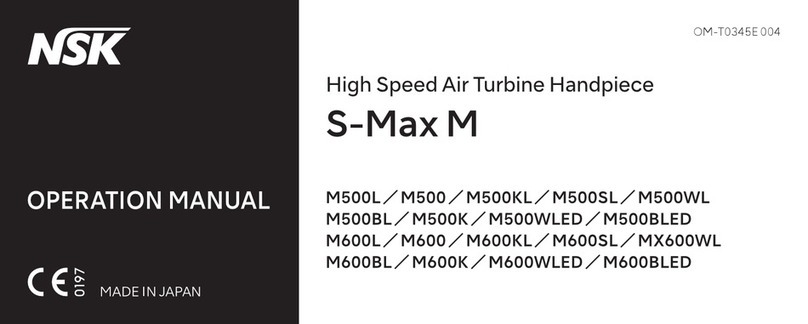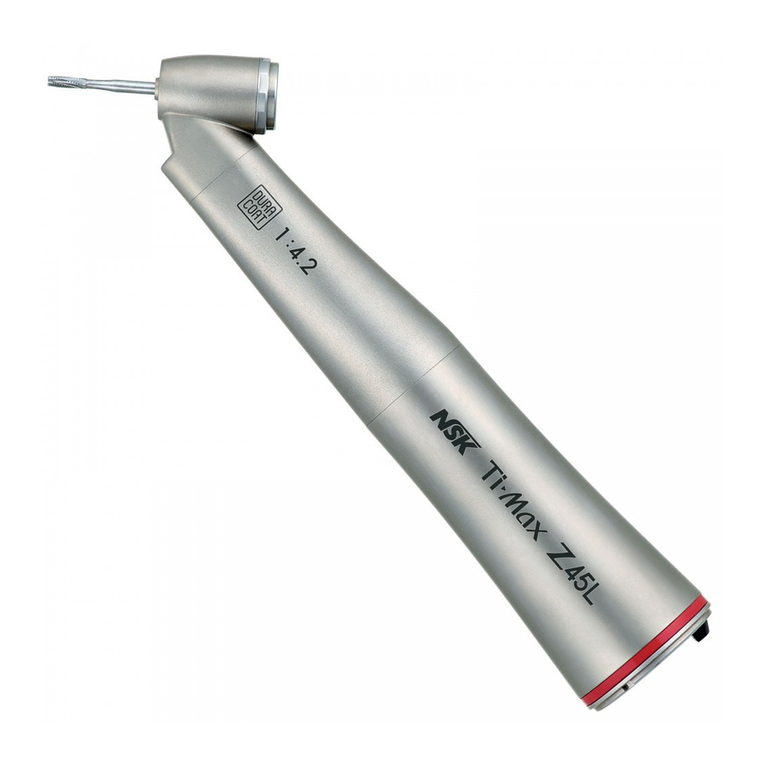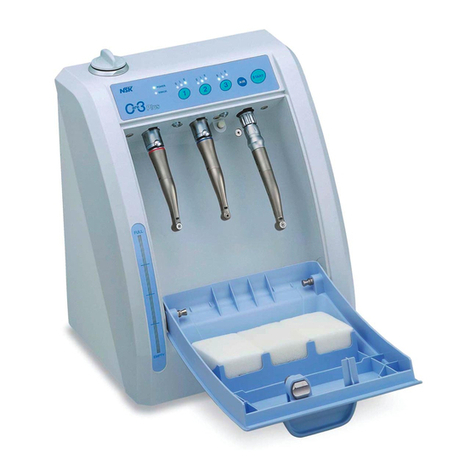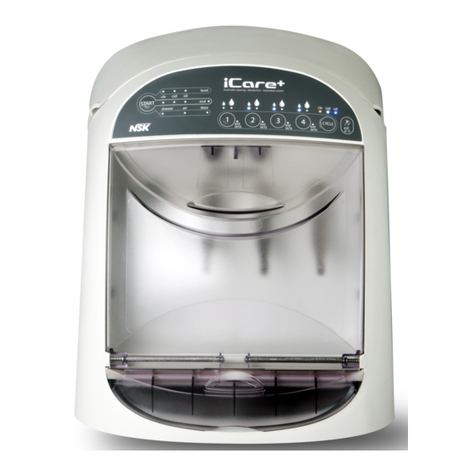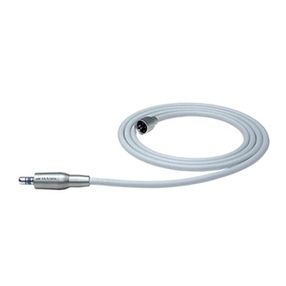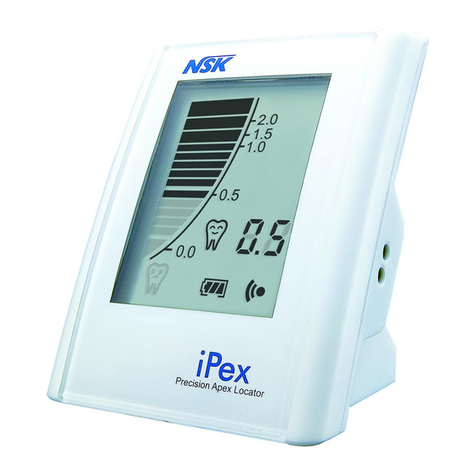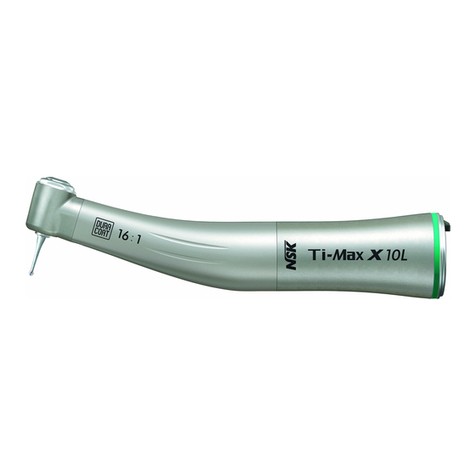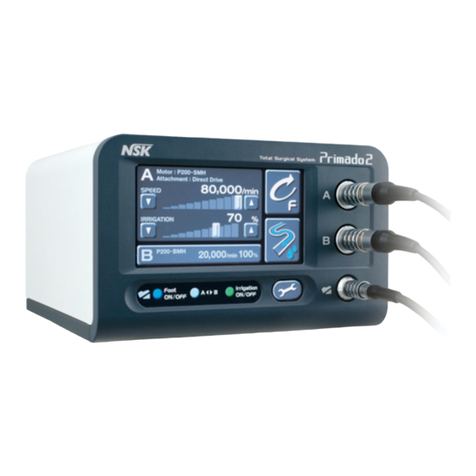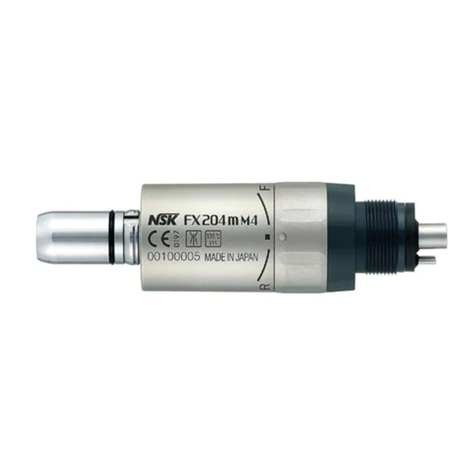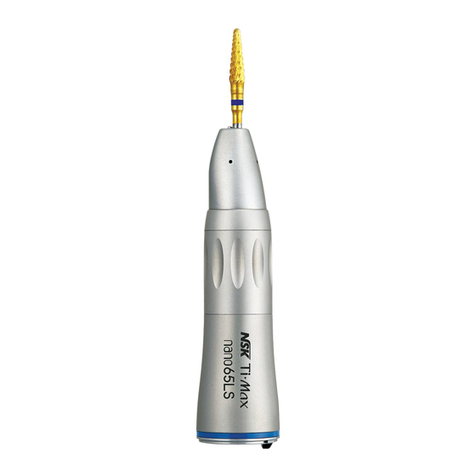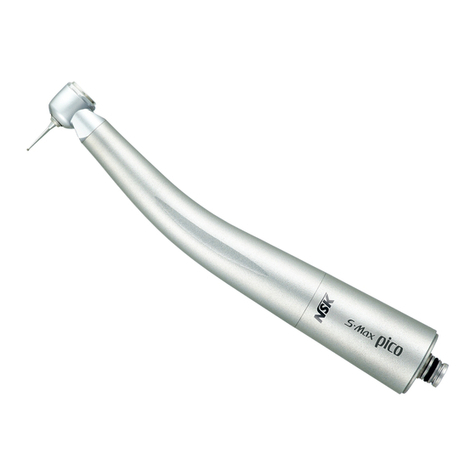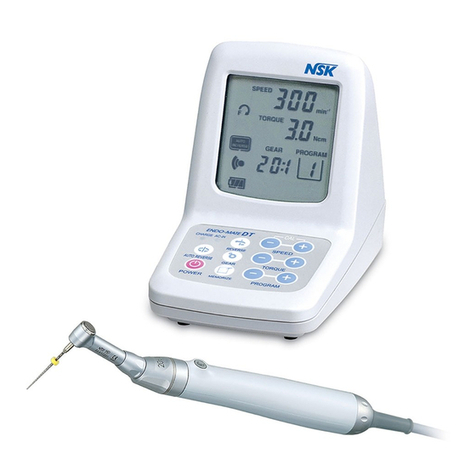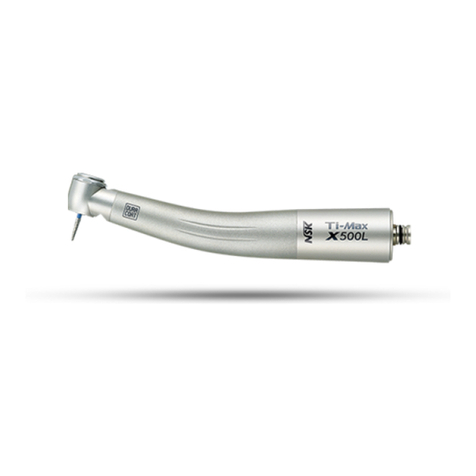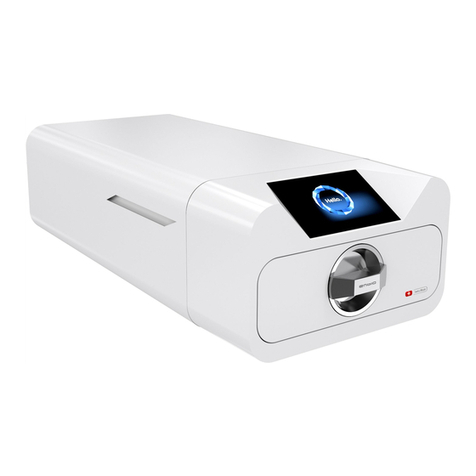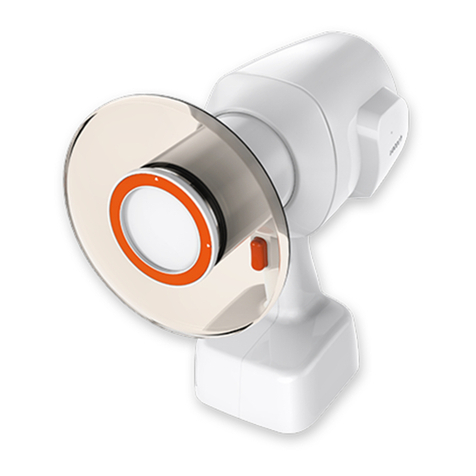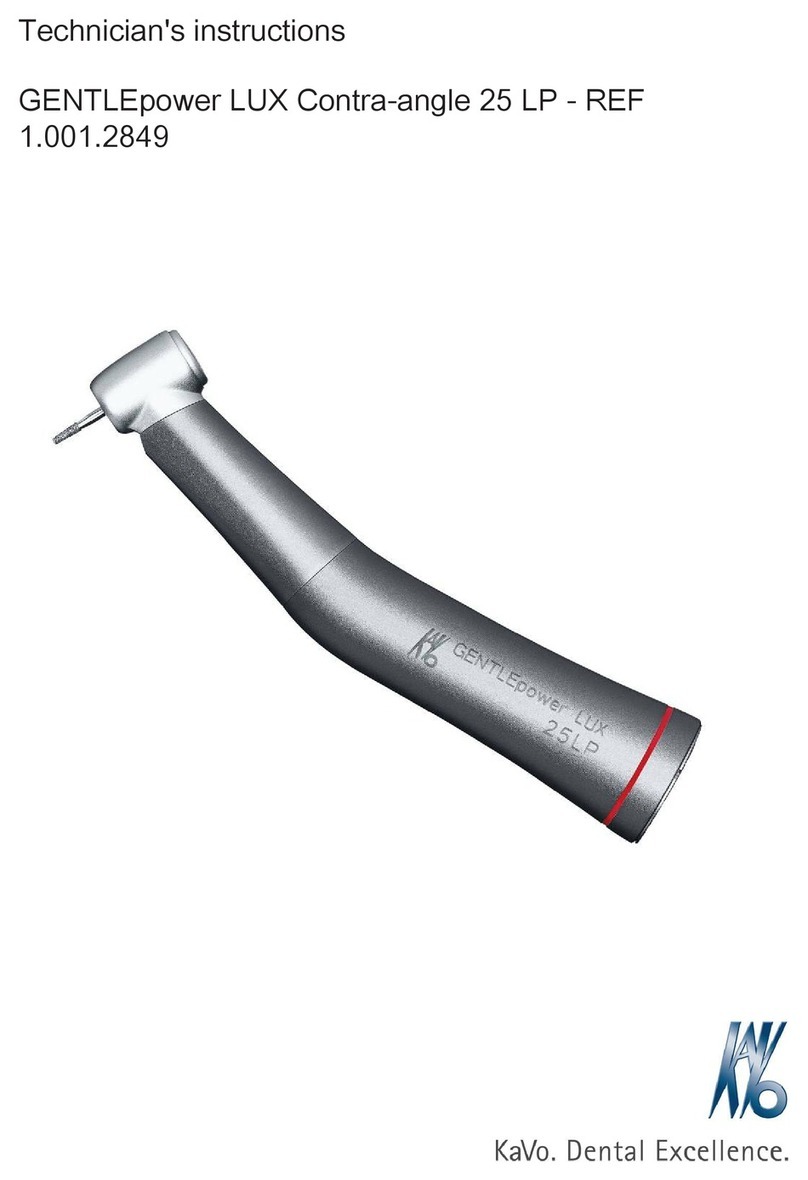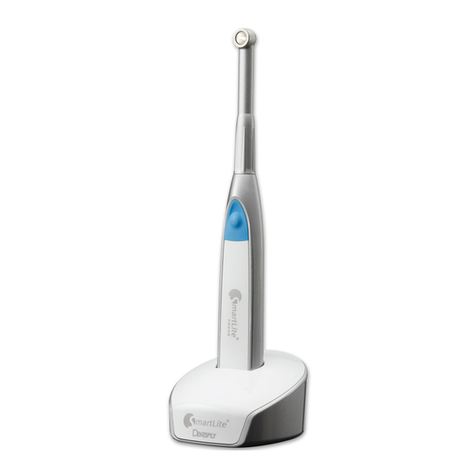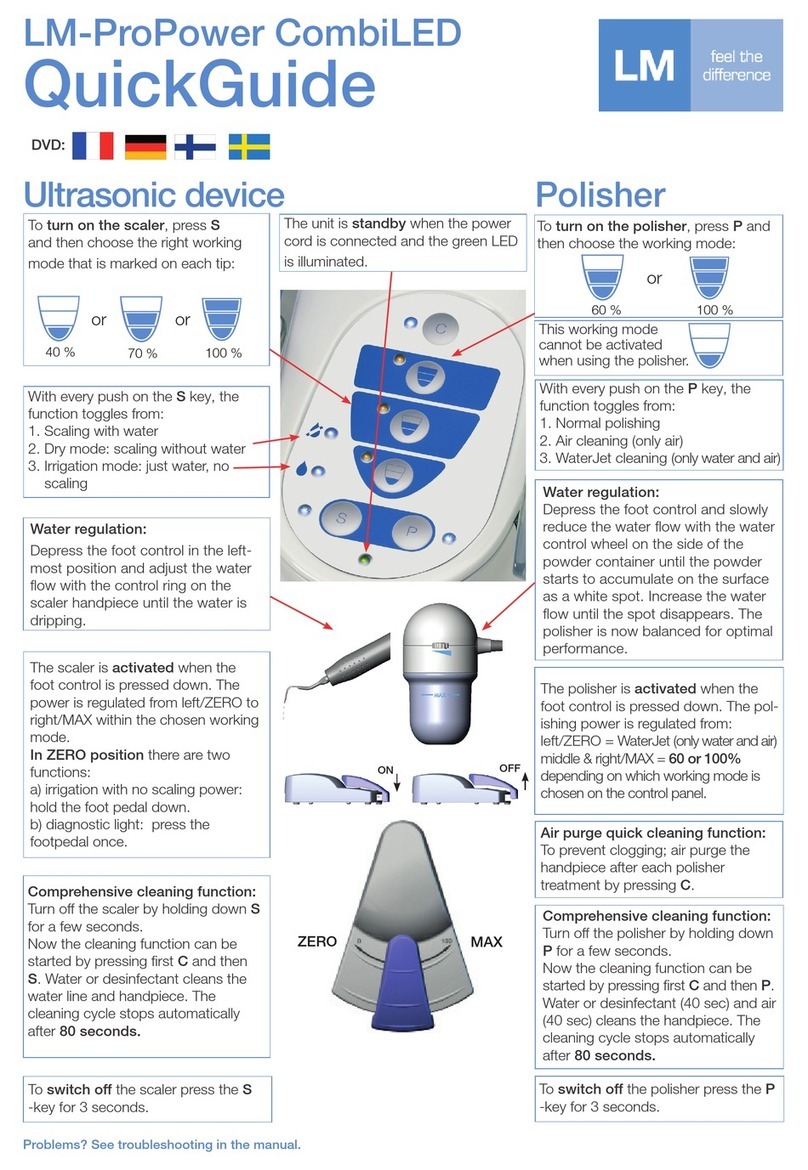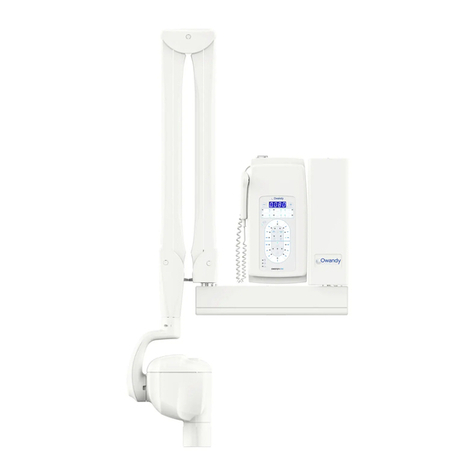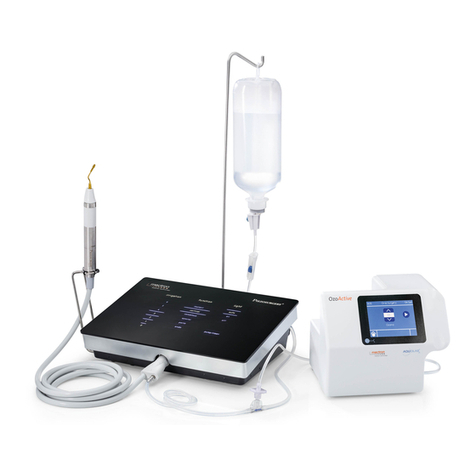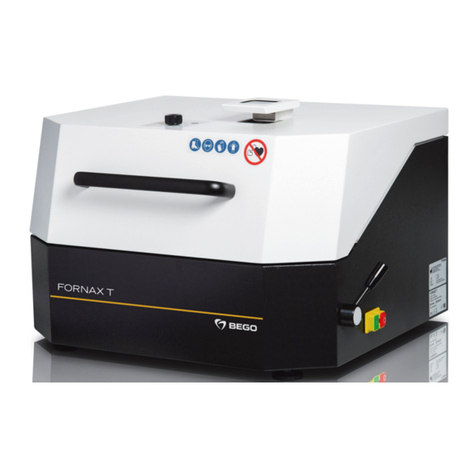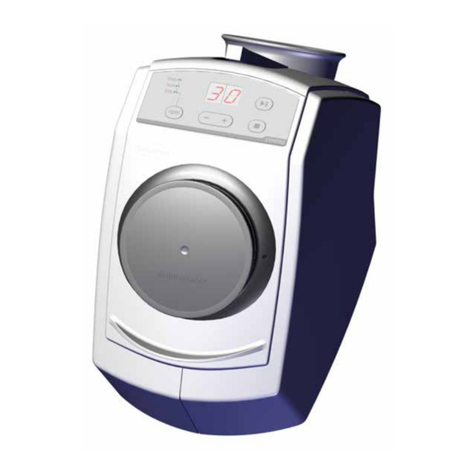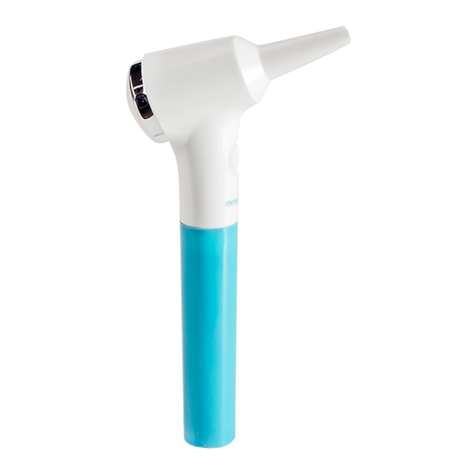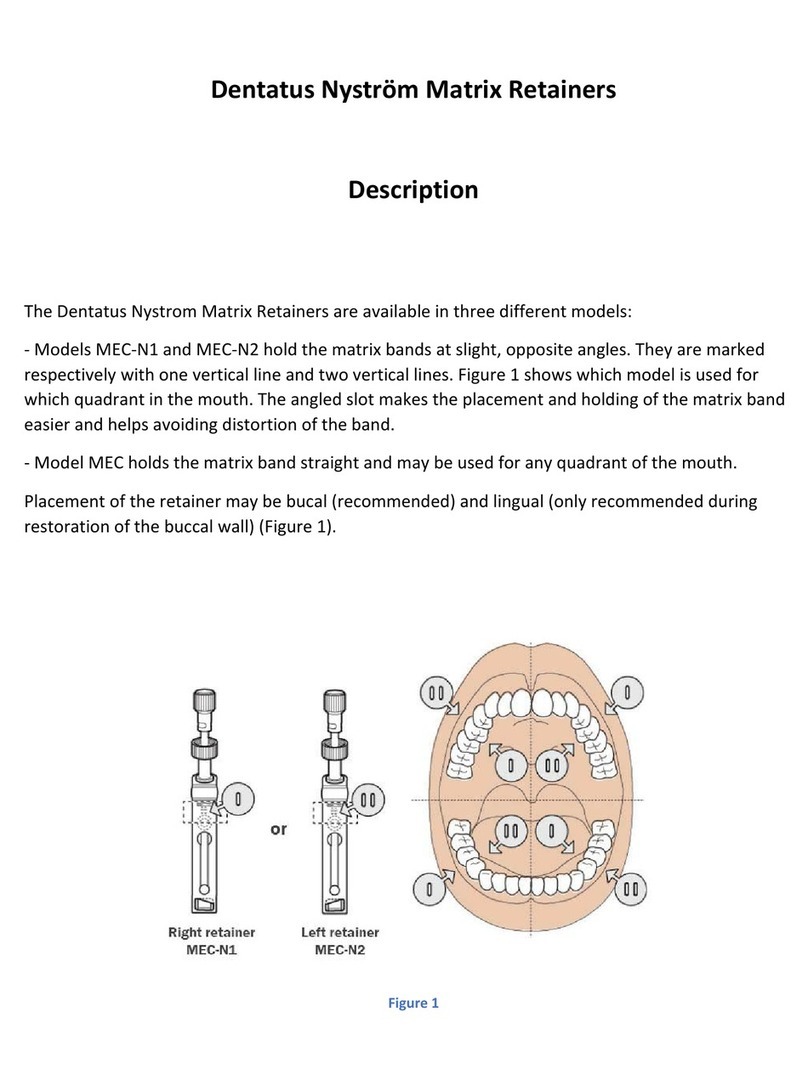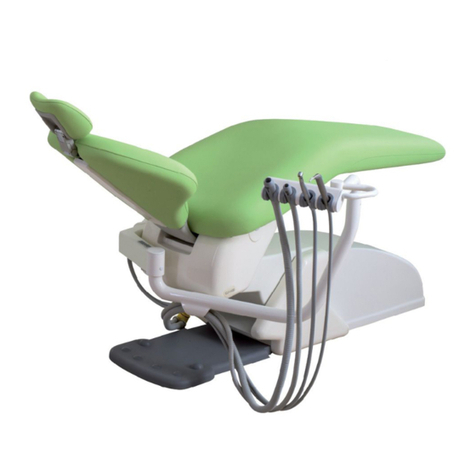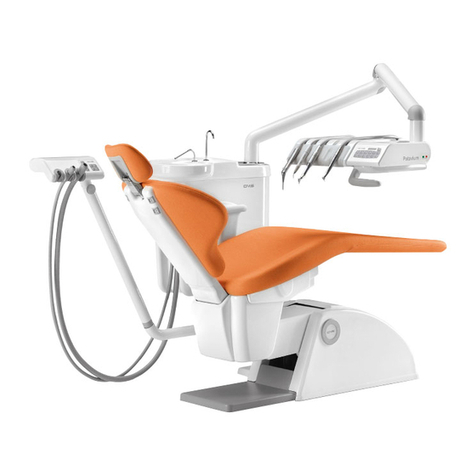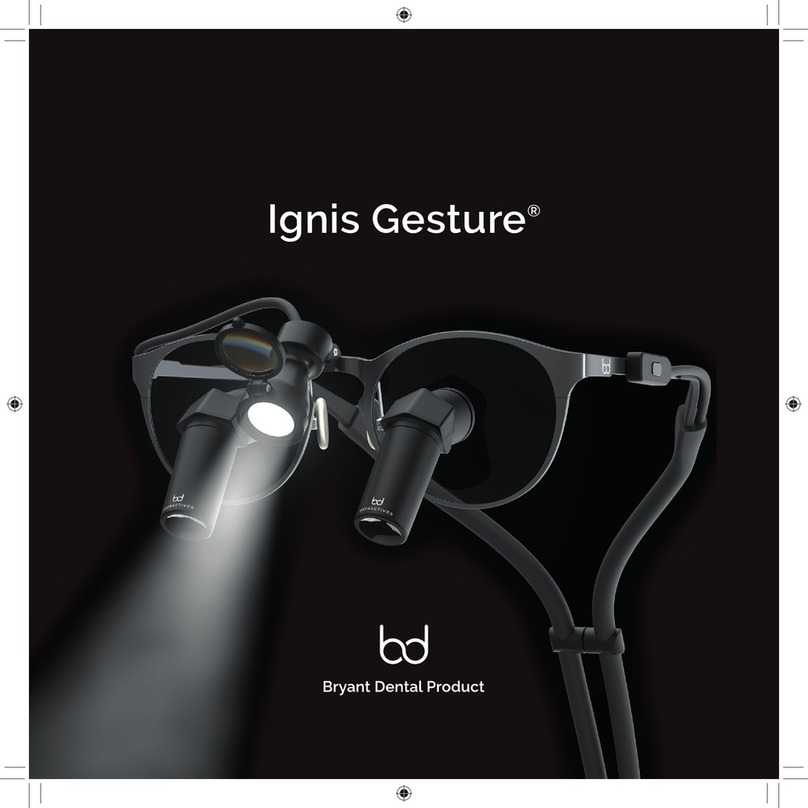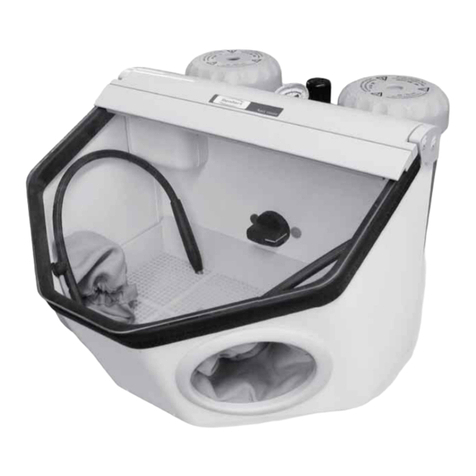
Operation Manual
Solid Titanium
High Speed Handpieces
Use Environment
Temperature : 0 - 40°C , Humidity: 30 - 75 % , Atomospheric Pressure: 700 - 1,060 hPa
Store and Transportation Environment
Temperature : -10 - 50°C , Humidity: 10 - 85% , Atomospheric Pressure: 500 - 1,060 hPa
Benutzungsumgebung
Temperatur : 0 - 40°C , Luftfeuchtigkeit: 30 - 75 % , Atmosphärischer Luftdruck: 700 - 1.060 hPa
Transport und Lagerung
Temperatur : -10 - 50°C , Luftfeuchtigkeit: 10 - 85 % , Atmosphärischer Luftdruck: 500 - 1.060 hPa
Environnement d’utilisation
Température : 0 - 40°C , Humidité: 30 - 75 % , Pression atmosphérique: 700 - 1.060 hPa
Transport et environnement de stockage
Température : -10 - 50°C , Humidité: 10 - 85 % , Pression atmosphérique: 500 - 1.060 hPa
Entorno de uso Temperatura: 0 - 40˚C, Humedad: 30 - 75%RH, Presión atmosférica: 700 - 1.060hPa
Transporte y entorno de almacenamiento Temperatura: -10 - 50˚C, Humedad: 10 - 85%RH, Presión atmosférica: 500 - 1.060hPa
Ambiente di utilizzo Temperatura: 0 - 40˚C, Umidità: 30 - 75%UR, Pressione atmosferica: 700 - 1.060hPa
Trasporto e ambiente di stoccaggio Temperatura: -10 - 50˚C, Umidità: 10 - 85%UR, Pressione atmosferica: 500 - 1.060hPa
KaVo® and MULTIflex® are registered trademarks of Kaltenbach & Voigt GmbH & Co., Germany. Sirona® is a registered trademark of Sirona Dental Systems GmbH, Germany.
W&H® and Roto Quick® are registered trademarks of W&H Dentalwerk Bürmoos GmbH, Austria. Bien-Air® and Unifix® are registered trademarks of Bien-Air Dental S.A.,Switzerland.
KaVo® und MULTIflex® sind eingetragene Marken von Kaltenbach & Voigt GmbH & Co., Deutschland. Sirona® ist eine eingetragene Marke von Sirona Dental Systems GmbH, Deutschland.
W&H® und Roto Quick® sind eingetragene Marken von W&H Dentalwerk Bürmoos GmbH, Österreich. Bien-Air® und Unifix® sind eingetragene Marken von Bien-Air Dental S.A., Schweiz.
KaVo® et MULTIflex® sont des maques déposées de la société Kaltenbach & Voigt GmbH & Co, Allemagne. Sirona® est une maque déposée par la société Sirona Dental Systems GmbH, Allemange.
W&H® et Roto Quick® sont des marques déposées de la société W&H Dentalwerk Bürmoos GmbH, Autriche. Bien-Air® et Unifix® sont des marques déposées de la société Bien-Air Dental S.A. Suisse.
KaVo® y MULTIflex® son marcas registradas de Kaltenbach & Voigt GmbH & Co., Alemania. Sirona® es una marca registrada de Sirona Dental Systems GmbH, Alemania.
W&H® y Roto Quick® son marcas registradas de W&H Dentalewerk Bürmoos GmbH, Austria. Bien-Air® y Unifix® son marcas registradas de Bien-Air Dental S.A., Suiza.
KaVo® e MULTIflex® sono marchi registrati di Kaltenbach & Voigt GmbH & Co., Germania. Sirona® è un marchio registrato di Sirona Dental Systems GmbH, Germania.
W&H® e Roto Quick® sono marchi registrati di W&H Dentalwerk Bürmoos GmbH, Austria. Bien-Air® e Unifix® sono marchi registrati di Bien-Air Dental S.A., Svizzera.
OM-T0277E 004
ENIT
ENES
ENFR
DE
ENEN
ENIT
ENES
ENFR
DE
ENEN
Specifications are subject to change without notice. 2015.01.20 10 B
The EU directive 93/42/EEC was applied in the design and production of this medical device.
